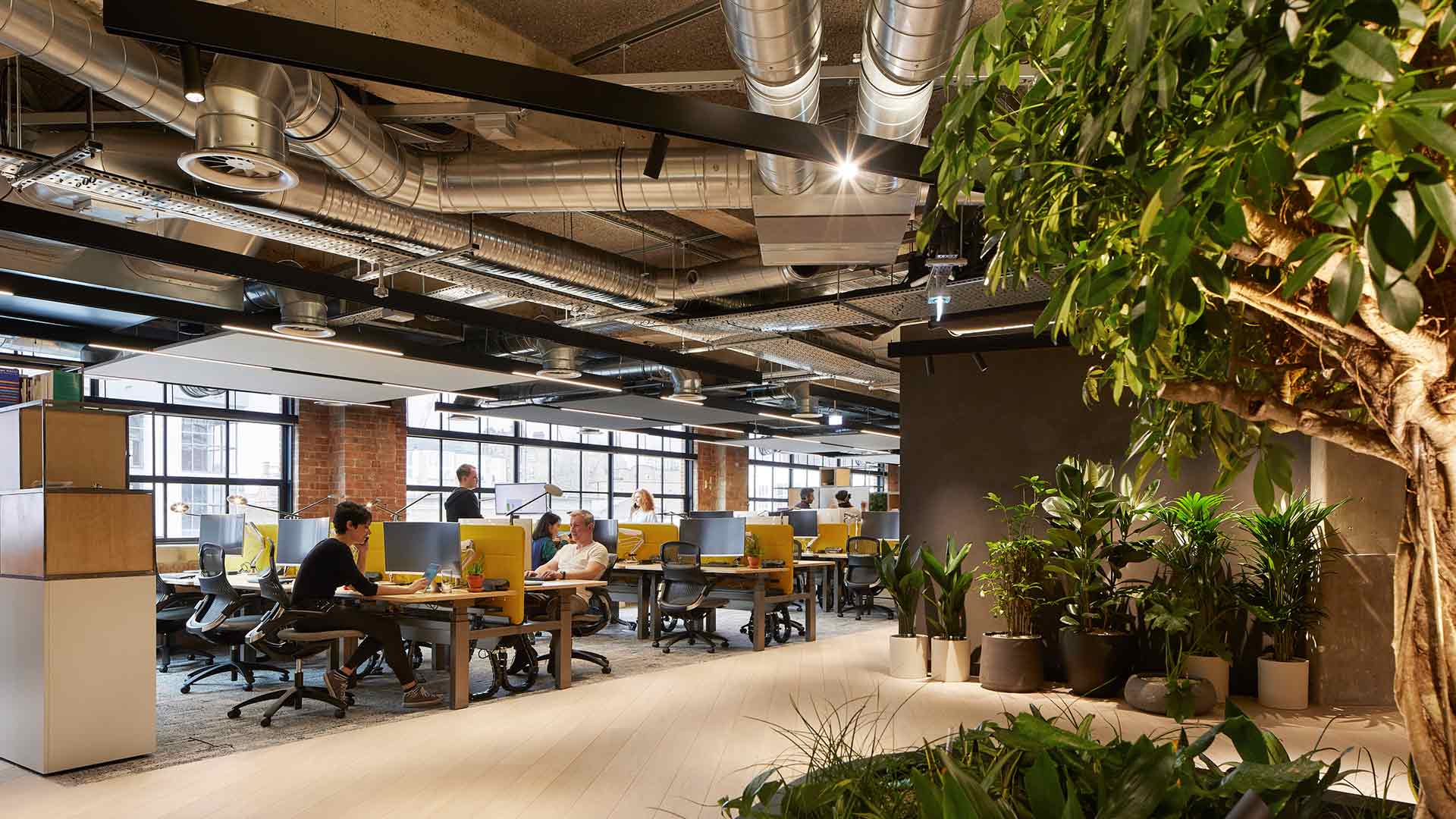Lighting interior greenery
As anyone who’s ever bought a house plant can confirm, keeping our green-leafed friends alive and happy indoors is surprisingly tricky. Plants that thrive out in nature under conditions ranging from scorching hot to cold and soaking wet, have a tendency to wither and die when invited into homes and buildings, even after only minor caretaking missteps. If you also factor in the fact that we’re embracing planting and greenery within our homes, workplaces and leisure locations at a level never seen before, it begs the question: why do we struggle to keep them alive?
Now, while I don’t profess to be green fingered in the slightest, I’ve indirectly found myself learning a fair bit about the subject as feature planting, green walls and even interior trees have been on the rise in our projects. Part of the answer to my question lies in the basics of biology and shouldn’t be a surprise to anyone who sat through school lessons about photosynthesis (the process by which all plants create energy from light). I won’t bore you reciting the science in old textbooks; what’s important to understand is just how different the requirements for light and plants are, compared to humans.
First off, let’s start with the similarities. Like humans, plants need both periods of light and periods of darkness – ideally around eight hours of darkness (on average) to remain healthy. While there are some plants and trees that are happy to be continuously bathed in light, the majority will struggle and eventually perish. This can be a problem in our built environments because people tend to dislike darkness, so lights are sometimes left burning from dusk till dawn.
Now for the key differences. When it comes to light, or more accurately electromagnetic radiation, plants respond in a very different way to humans. As mentioned earlier, plants derive energy via photosynthesis, and while humans see all light in the visible spectrum, photosynthesis has peaks in the blue and red wavelengths but little effectiveness in the others – it’s particularly poor at utilising green as it’s mostly reflected and gives plants their rich green colour. Our eyes on the other hand respond very well to green – in fact, it’s the wavelength of light that our eyes are most sensitive to. Plants also respond to infrared and ultraviolet wavelengths (of which we don’t) and these are the triggers that help to stimulate root development and flowering / fruiting.
When you start to consider these differences, you begin to build a picture of why luminaires designed for the human visual system are not well placed for keeping plants alive. What’s most efficient for our eyes is next to useless for plants, and wavelengths that are useless to us are a necessary component for plants to flourish and complete their seasonal changes.
With the drive for environmentally friendly and low-energy buildings, we’ve become great at designing structures and luminaires around just our visual needs and removing all but the essential drains on energy. It’s therefore not surprising that when plants are taken out of their light-rich exterior environments and placed indoors, they can struggle. I’m by no means suggesting that we strip out all green walls and planter boxes and return them to the outdoors, far from it. Having internal greenery looks great and helps our physical and psychological wellbeing. It also helps clean the air and provide a link to nature, which is widely understood to help bring calm and reduce stress.
As lighting designers our job is to look holistically at how we light a space and ensure that lighting meets the needs of all occupants in a building. This approach should also apply to plants. When we review a space, we need to get a good understanding of the light requirements of the individual planting elements so that the lighting selected provides a suitable level and quality of light. For example, a moss wall is easy to incorporate but trees or fruiting plants can be much more onerous. The resulting requirements may mean we need to add additional specialist light fittings to solely illuminate the greenery or use different fittings with a better full spectrum light source.
None of this is without its drawbacks. The efficiency of the design may not be as high as it could have been, and it will likely increase the energy usage of the space. We need to carefully consider a project in its entirety and get a lighting designer involved in a scheme from the beginning. When lighting for planting is only thought about fairly late on in the design process, it can cause significant issues. If the lighting designer is consulted early on, we can make sure that the artificial lighting is designed to help plants flourish and in a way that enriches the interiors as intended.
Blog post by Philip Copland
Image courtesy of the client


